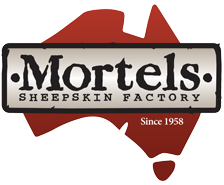
A Little History
Appeal For Sheepskins
20 November 1914 Raymond Terrace Examiner
An appeal for the purpose of providing not only the men of the Australian Expeditionary Forces but as many as possible of the British “Tommies” on active service, with a tanned sheepskin waistcoat has started. The waistcoats will prove of great value to the troops during the winter in Europe, and a sample garment has met with the approval of the military experts. It was decided to push ahead with the work of organisation without delay.


Tanned Sheepskin Clothing Commitee
20 November 1914 Raymond Terrace Examiner
A circular from the Commercial Banking Company of Sydney explained that a committee was buying skins from Sydney wholesale butchers, getting them tanned and made into vests.
The committee was seeking donations of money to be used pending donations of skins from the country. A donation of 6s would provide comparative comfort for a soldier at the front and would be instrumental in saving his life.
By 1916, there were 75,510 waist coats and 61,193 insoles were sent to soldiers at the front.
At the time it was said, "Australia rode on the sheep’s back". However, wool and sheepskins were being exported to overseas mills for processing. Governor Sir Gerald Strickland said “the movement behind the ingenuity and design of the waistcoat had taken a typically Australian product direct from the producer to the consumer. I hope that when the war is over this movement will be the means of establishing a new permanent industry in Australia.’
The ‘Diggers Vest’ was a practical gift of caring and community support that saved many lives of the soldiers at the Front. Significantly, the vests also gave birth to a new Australian Sheepskin Industry which would in time serve Australian servicemen during World War I, World War II and benefit all Australians. The following letters illustrate these points.
My Dear Miss Bishop, We appreciate your thoughtfulness. Every article is useful, and the Germans will be a busy crowd trying to knock us out of our sheepskin coats.
Trooper Martin Hussey 1st Light Horse Regiment, 19th March 1915, Raymond Terrace Examiner
The weather is chilly here. Some of the boys are on furlough from France. They say the mud is simply awful, up to their waists in places. They almost all wear sheepskin vests over their tunics and find them very warm, especially as they are unable to have their blankets with them. One boy told me he had not seen a blanket for weeks.
Nurse Stobo 3rd Australian Auxiliary Hospital,
Dartford Kent,
17th February 1917, Maitland Mercury
